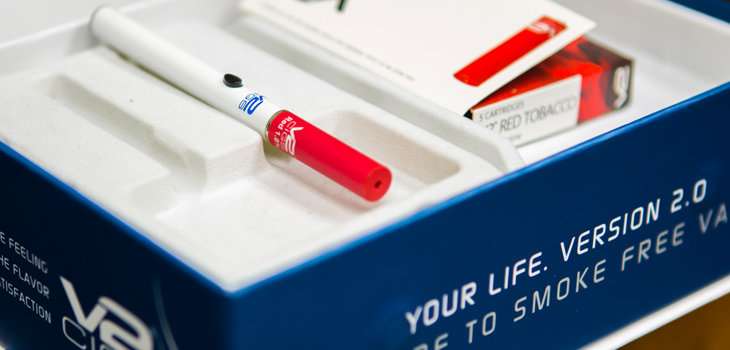Credit: Ohio University
A new Ohio University engineering study shows that e-cigarettes, while still toxic, are less harmful than conventional cigarettes.
Amir Farnoud, assistant professor of chemical and biomolecular engineering in the Russ College of Engineering and Technology, and his team looked at how e-cigarettes—battery-powered devices that deliver nicotine by heating an "e-liquid" – affect lung surfactant.
Pulmonary surfactant is a mixture of lipids and proteins that lines the alveolar region of the lungs, reducing the surface tension of the alveolar fluid, preventing lung collapse, and therefore decreasing the work of breathing. The very small particles in e-cigarette vapor can reach deep into the lungs. A number of studies have focused on how e-cigarettes affect the cells of the pulmonary airways or the deep lungs, but the OHIO team wanted to see whether e-cigarette vapor affects the ability of surfactant to reduce surface tension.
They found that burning tar, an ingredient found in conventional cigarettes, was specifically damaging for pulmonary surfactant, but that particles in e-cigarette vapor do not affect the normal functioning of surfactant because e-cigarettes involve vaporization, not burning. On the other hand, conventional cigarettes significantly inhibited the ability of surfactant to reduce surface tension.
"At least we know the first protective layer is not going to be affected," Farnoud said, adding that the results don't completely rule out the toxic potential of e-cigarettes
Researchers exposed both conventional cigarette and e-cigarette vapor to calf lung surfactant extract (Infasurf, ONY Inc.), which is used to treat preterm infants who have yet to form surfactant. The study included three different e-liquid flavors (tobacco, berry, and mint), because different e-liquid flavoring has been shown to produce different chemicals in e-cigarette vapor.
"There is a lot of interest in understanding what e-cigarettes do to the pulmonary health," Farnoud said, noting that vapor must first pass through surfactant before reaching deep lung cells.
The research team also included Savas Kaya, professor of electrical engineering; technician Rebecca J. Przybyla; chemical and biomolecular engineering doctoral candidate Saeed Nazemidashtarjandi, and electrical engineering doctoral candidates Rajan Parthiban and Jason Wright.
The study, titled "Electronic cigarette vapor alters the lateral structure but not tensiometric properties of calf lung surfactant," was first published in Respiratory Research journal.
More information: Rebecca J. Przybyla et al. Electronic cigarette vapor alters the lateral structure but not tensiometric properties of calf lung surfactant, Respiratory Research (2017). DOI: 10.1186/s12931-017-0676-9
Journal information: Respiratory Research
Provided by Ohio University























